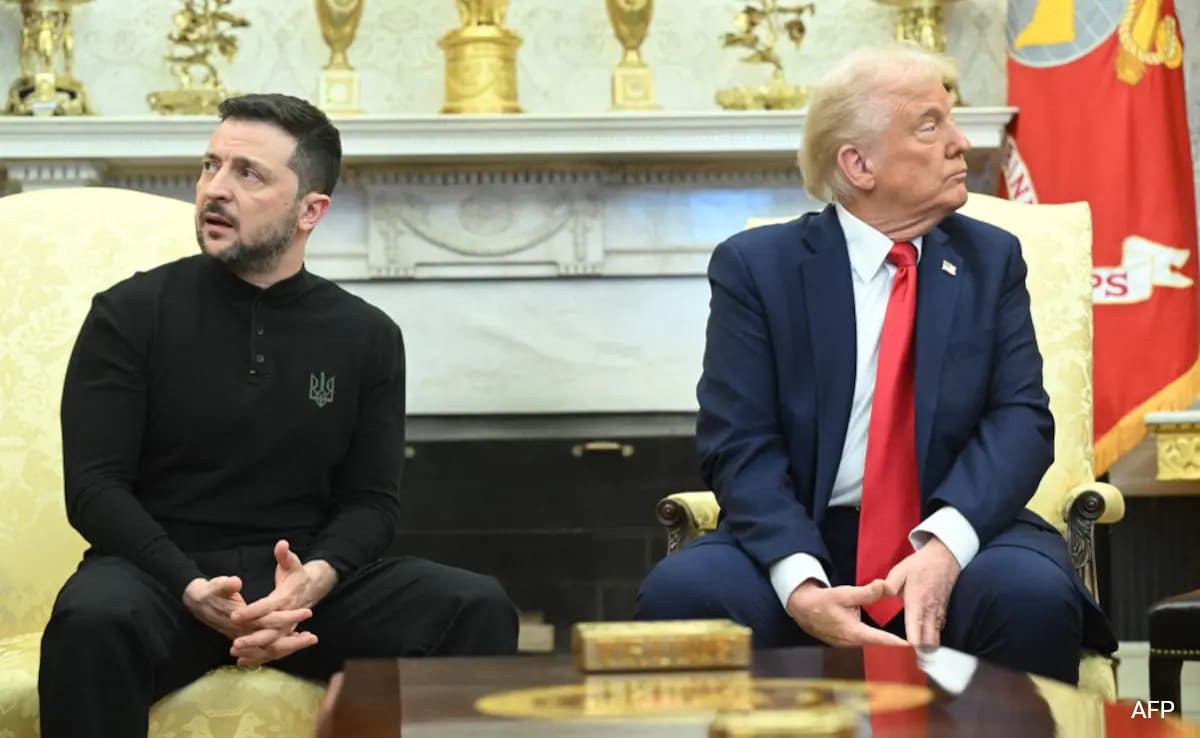Author: Contributor
-

The Smartest Monetary Shares to Purchase With $200 Proper Now
S&P World, American Specific, and Nu are nice long-term investments. Many monetary shares swooned in 2022 and 2023 as inflation, rising rates of interest, geopolitical conflicts, and different macro headwinds shook the markets. However in 2024, a few of these shares stabilized with the Federal Reserve’s three rate of interest cuts. This 12 months, the…
-

As west Texas fights measles, worries develop over federal assist
Getty Photos The newest outbreak of measles started in Gaines County, Texas, the place vaccination charges are low In her hometown of Lubbock, Texas, Leah, a pregnant mom, has been avoiding shops and different public areas for the final two weeks. On Wednesday, town noticed a six-year-old baby who was not vaccinated in opposition to…
-

Federal workers are requested once more to report their actions at work – now on a weekly foundation
Federal workers at a number of authorities companies are as soon as once more being informed to report their work accomplishments over the previous week to the Trump administration, based on a union supply and several other workers who obtained the Friday night missives. The emails, titled “What did you do final week? Half II,”…
-

Inside the 139 minutes that upended the US-Ukraine alliance
CNN — White House chefs were at work in the West Wing on Friday laying out plates of rosemary chicken, celery root puree and collard greens when the sound of raised voices began floating over from the Oval Office. Inside, a remarkable scene was unfolding. President Donald Trump and Vice President JD Vance had begun…
-

“Flew To Washington, Walked Into Kremlin”: A Clash That Shook The World
New Delhi: The White House meeting between US President Donald Trump, Vice President JD Vance, and Ukrainian President Volodymyr Zelensky on Friday was supposed to focus on minerals-sharing agreements and US support for Ukraine’s war against Russia. Instead, it erupted into an extraordinary confrontation that shocked the world. In front of the world’s media, Trump…
-

Trump Sums Up His Zelensky Showdown: ‘This Is Going to Be Great Television’
One of the most surreal moments of Friday’s Oval Office showdown between President Trump and President Volodymyr Zelensky of Ukraine came at the very end. After all the shouting and the saber-rattling and the lecturing and the pleading and the politicking had ceased, the American president shifted a little in his seat and shared an…
-

Sensible Guide – The New York Times
SATURDAY PUZZLE — Ryan Judge has constructed two prior puzzles for The New York Times, both of them themeless — one ran on a Friday and the other on a Saturday. For all the solvers who enjoy guessing which day a puzzle should fall on based on its difficulty, today’s began as a Friday but…
-

O’Hare vs. Midway: Which airport should I fly into?
Visitors to Chicago have two airports to choose from: O’Hare International Airport (ORD), a sprawling complex in Chicago’s northwest corner, or Midway International Airport (MDW), which offers more convenient access to the city but with fewer flights. Different airlines generally focus on different airports; for example, Southwest Airlines flyers have the best selection out of…
-

Tulsi Gabbard commends Trump over tense exchange with Zelenskyy
Tulsi Gabbard, the new director of national intelligence, thanked President Donald Trump Friday for his “unwavering leadership” after his clash with Ukrainian President Volodymyr Zelenskyy during a meeting in the Oval Office earlier in the day. “Thank you @realDonaldTrump for your unwavering leadership in standing up for the interests of the American people, and peace,”…
-

Is the Capital One Venture Rewards card worth it?
If you’re wondering whether a travel rewards credit card is right for you, consider your travel goals and financial needs. Then, determine which card fits your lifestyle the best and whether it’s worth paying its annual fee. If your goal is to save on travel, the Capital One Venture Rewards Credit Card might be a…